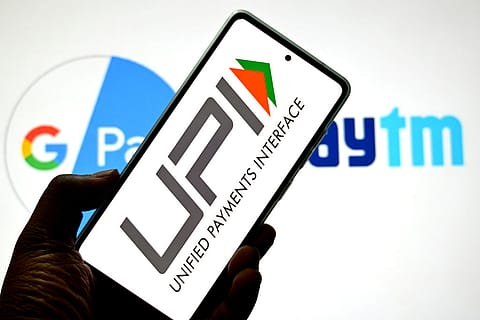From tuition fees to hospital bills: UPI may soon allow bigger transactions as RBI empowers NPCI to set limits
Banks shall continue to have the discretion to decide their own internal limits within the limits announced by NPCI.

In a move aimed at enhancing flexibility within the UPI ecosystem, the Reserve Bank of India proposed a shift in how transaction limits are managed. Currently, UPI transactions are capped at ₹1 lakh, with certain Person-to-Merchant (P2M) use cases allowed up to ₹2 lakh or ₹5 lakh.
The RBI now suggests that the National Payments Corporation of India (NPCI), in consultation with banks and stakeholders, may revise these limits based on emerging user needs—while ensuring safeguards and allowing banks to maintain their own internal caps.
The Statement on Developmental and Regulatory Policies, issued on April 9, 2025, stated, "To enable the ecosystem to respond efficiently to new use cases, it is proposed that NPCI, in consultation with banks and other stakeholders of the UPI ecosystem, may announce and revise such limits based on evolving user needs. Appropriate safeguards will be put in place to mitigate risks associated with higher limits. Banks shall continue to have the discretion to decide their own internal limits within the limits announced by NPCI."
Currently, P2P UPI payments are capped at ₹1 lakh, and P2M payments at ₹3-5 lakh. The RBI wants to revisit these limits to accommodate new use cases. "UPI payments are now accepted in select countries abroad, so this may be one of the use cases. On the whole, on the retail side, UPI payments are actually getting smaller. While transactions have grown 33% February-on-February to 16 billion payments moving ₹22 trillion for the month, the average UPI payment in February 2025 was ₹1364 compared to ₹1510 the previous February. This reveals that reliance on UPI for small-ticket payments is increasing," said Adhil Shetty, CEO of BankBazaar.com.
"The RBI’s proposal in the latest monetary policy to allow NPCI the flexibility to revise UPI P2M transaction limits is a progressive step towards making UPI a preferred mode of commerce," said Anup Agrawal, CEO & Co-Founder of Kiwi. "If these limits are increased, it will pave the way for higher-value use cases and discretionary spending, from paying college tuition fees to settling large hospital bills directly through UPI. For TPAP players, it opens the door to collaborate with a broader range of merchants and offers seamless, high-ticket transactions on a platform that already enjoys strong muscle memory among users. With the right safeguards, this move strengthens both user confidence and the digital payments ecosystem," added Agrawal.
RBI's decision to enable NPCI for dynamic increase in UPI transaction sizes is a major step towards the growth of India’s digital payment space. Ankush Julka, CEO of Mufinpay, said, "By enabling higher transaction sizes in payments to merchants, the system is likely to support high-value, frequent use cases in categories such as travel, healthcare, education, as well as retail better. It will lead to faster consumer as well as business adoption of digital payments for even greater convenience as well as credibility. Notably, with suitable checks in place, it meets the twin objectives of growth as well as safety, such that the system scales in tandem with the altered needs of the market."